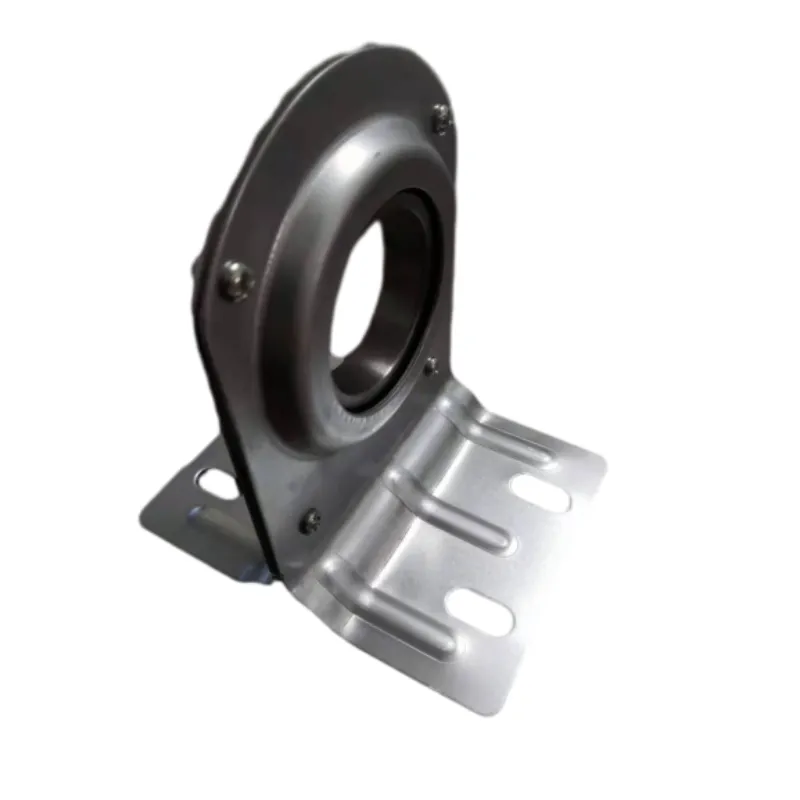
Dec . 16, 2024 15:45 Back to list
cylindrical roller bearing sizes
Understanding Cylindrical Roller Bearing Sizes
Cylindrical roller bearings are a vital component in various machinery and equipment, playing a crucial role in load support and rotational efficiency. They consist of cylindrical rollers that facilitate the rotation of coaxial elements, allowing for high radial load-bearing capabilities and reduced friction. Understanding the sizes of cylindrical roller bearings is essential for ensuring optimal performance in their applications.
Key Characteristics of Cylindrical Roller Bearings
Cylindrical roller bearings are designed to handle heavy radial loads while maintaining minimal friction. They come in various sizes and configurations, primarily characterized by their dimensions such as outer diameter (OD), inner diameter (ID), and width (W). The size of a bearing largely determines its load-carrying capacity and operational efficacy.
One of the standout features of cylindrical roller bearings is their ability to accommodate high speeds compared to other types of bearings, such as ball bearings. They are often used in applications where heavy loads and high speed are a priority, such as in electric motors, gearboxes, and various industrial machinery.
Size Designations
Bearings are typically identified using standardized codes that denote their size. In the case of cylindrical roller bearings, these codes generally follow the ISO 15 standard, which includes a numerical designation for the bearing type and size. For instance, a commonly used type of cylindrical roller bearing may be designated as NU205E, where NU indicates the design type, 205 represents the size, and E signifies specific features related to the bearing's dimensions or construction.
Measurement Units
In the world of cylindrical roller bearings, sizes are commonly measured in millimeters. The inner diameter (ID), outer diameter (OD), and width (W) provide crucial specifications when selecting a bearing for specific applications. For example, a bearing with an ID of 25 mm, an OD of 52 mm, and a width of 15 mm is typically designated as a 25x52x15 cylindrical roller bearing.
cylindrical roller bearing sizes

Size Variations
Cylindrical roller bearings exhibit a variety of configurations, including single row, double row, and multi-row designs. Each configuration has its unique sizing and load-carrying capabilities. Single row cylindrical bearings are the most common and are capable of handling moderate radial loads. On the other hand, double-row designs can support higher loads and offer improved stability.
Additionally, bearings come in various types based on their design. Some types include the NN and NNU series, which cater to specific axial load requirements. The variation in design types affects the dimensions of the bearings, impacting the selection process for manufacturers and engineers.
Importance of Proper Sizing
Selecting the appropriate size of cylindrical roller bearings is crucial for the overall performance and reliability of machinery. An incorrectly sized bearing can lead to premature wear, increased maintenance costs, or even catastrophic failure. Therefore, it is imperative to consider factors such as load requirements, speed, and operating conditions when determining the right size.
When specifying bearings, engineers often use load ratings and life calculation formulas to select the size that will perform adequately under expected loads. The ability to accurately predict the life of a bearing based on size and application is integral in reducing operational downtime and maintenance issues.
Conclusion
In conclusion, understanding cylindrical roller bearing sizes is fundamental for engineers and manufacturers alike. The dimensional characteristics, designation codes, and types influence performance and suitability for specific applications. Whether in heavy industrial settings or precise machinery, the right cylindrical roller bearing can significantly enhance efficiency and longevity. By focusing on proper sizing and selection, businesses can ensure that their equipment operates optimally, minimizing costs and maximizing output in the process.
Latest news
-
Premium Deep Groove Ball Bearings | High Speed & Reliability
NewsAug.29,2025
-
Durable Scaffolding Clamps - Secure & Reliable Tube Connectors
NewsAug.28,2025
-
Common Failures in Thrust Ball Bearings and Solutions
NewsAug.22,2025
-
How Tapered Roller Bearings Can Take Shock Loads
NewsAug.22,2025
-
Angular Bearings in High-Precision Spindles
NewsAug.22,2025
-
The Impact of Misalignment on Cylindrical Roller Bearing Performance
NewsAug.22,2025
